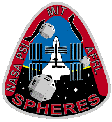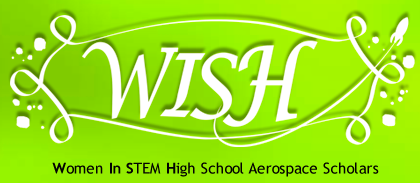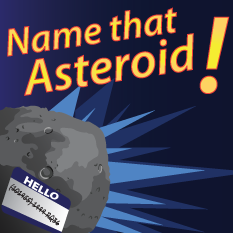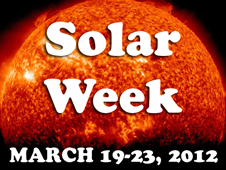 NASA wants to launch a picture of you on the final space shuttle mission.
NASA wants to launch a picture of you on the final space shuttle mission.
Link to the NES Virtual Campus home page.
 NASA wants to launch a picture of you on the final space shuttle mission.
NASA wants to launch a picture of you on the final space shuttle mission.
Link to the NES Virtual Campus home page.
 On Friday, Jan. 11th, high school students from around the world joined in fierce competition to claim the championship spot in the Synchronized Position Hold, Engage, Reorient, Experimental Satellites, or SPHERES, Zero Robotics High School Tournament 2012. The young competitors operated robotic satellites aboard the International Space Station, or ISS, using programs they wrote in preparation for the event. The finalists watched the action via live downlink from the space station with anticipation, as astronauts supervised the satellites during the ISS Finals.
On Friday, Jan. 11th, high school students from around the world joined in fierce competition to claim the championship spot in the Synchronized Position Hold, Engage, Reorient, Experimental Satellites, or SPHERES, Zero Robotics High School Tournament 2012. The young competitors operated robotic satellites aboard the International Space Station, or ISS, using programs they wrote in preparation for the event. The finalists watched the action via live downlink from the space station with anticipation, as astronauts supervised the satellites during the ISS Finals.
The finals event followed three months of online simulation competitions, during which the initial pool of 96 teams from the United States and 47 teams from Europe was narrowed to nine and six alliances, respectively. Each alliance consisted of three different teams of high school students that joined forces in November 2012 to collaborate and write the best computer programs to run on the SPHERES aboard the space station.
To read more about the ZERO Robotics challenge, visit https://www.nasa.gov/mission_pages/station/research/news/zero_robotics.html.
To get your math students involved in using robotics to discover algebra concepts, check out the NASA Explorer Schools lesson: Algebraic Equations: Calculator Controlled Robots. The lesson can be found on the NES Virtual Campus at http://explorerschools.nasa.gov.
 Are you or your students (ages 13 years or older) curious about our nearest star, moon rocks, volcanoes and other wonders of the universe? Come to the Smithsonian’s Stars, a series of 10 lectures by Smithsonian researchers who are exploring the sun, the moon, planets, stars, galaxies and the universe. These speakers will share behind-the-scenes details about how their research is done and technologies that advance new discoveries at the Smithsonian Institution.
Are you or your students (ages 13 years or older) curious about our nearest star, moon rocks, volcanoes and other wonders of the universe? Come to the Smithsonian’s Stars, a series of 10 lectures by Smithsonian researchers who are exploring the sun, the moon, planets, stars, galaxies and the universe. These speakers will share behind-the-scenes details about how their research is done and technologies that advance new discoveries at the Smithsonian Institution.
Each lecture begins at 5:15 p.m. and is followed by a question-and-answer session. A Discovery Station activity will take place at 4 p.m. prior to each lecture. Stay after the lecture to visit the observatory, weather permitting.
Upcoming lectures are:
Questions about this lecture series should be directed to the visitor service line at 202-633-1000.
The Smithsonian’s Stars Lecture Series is made possible by a grant from NASA.
Link to the NES Virtual Campus home page.
 The Texas High School Aerospace Scholars project is an interactive, online learning experience. It is highlighted by a six-day internship where selected students are encouraged to study mathematics, science, engineering or computer science by interacting with engineers at NASA’s Johnson Space Center in Houston.
The Texas High School Aerospace Scholars project is an interactive, online learning experience. It is highlighted by a six-day internship where selected students are encouraged to study mathematics, science, engineering or computer science by interacting with engineers at NASA’s Johnson Space Center in Houston.
The Texas High School Aerospace Scholars project is open to high school juniors throughout Texas. Applicants must be U.S. citizens and have access to the Internet.
The application deadline has been extended to Dec. 16, 2012.
For additional information on the project and to apply online, visit http://has.aerospacescholars.org/.
Questions about this opportunity should be directed to jsc-aeroscho@mail.nasa.gov.

The application deadline is Dec. 28, 2012.
For more information and a link to the application, visit http://www.wish.aerospacescholars.org.
 Did you know you may be able see the International Space Station from your home? As the third brightest object in the sky, after the sun and moon, the space station is easy to see if you know where and when to look for it.
Did you know you may be able see the International Space Station from your home? As the third brightest object in the sky, after the sun and moon, the space station is easy to see if you know where and when to look for it.
NASA’s Spot the Station service sends you an email or text message a few hours before the space station passes over your house. The space station looks like a fast-moving plane in the sky, though one with people living and working aboard it more than 200 miles above the ground. It is best viewed on clear nights.
For more information and to sign up for alerts, visit Spot The Station.
This opportunity is a great extension to NASA Now: The Mechanics of Solar Panels. To access this episode of the Emmy Award winning NASA Now series, log into the NES Virtual Campus.
 Students worldwide have an opportunity to name an asteroid from which an upcoming NASA mission will return samples to Earth. Scheduled to launch in 2016, the mission is called the Origins-Spectral Interpretation-Resource Identification-Security-Regolith Explorer, or OSIRIS-REx. The competition is open to students under age 18. Each contestant can submit one name, up to 16 characters long. Entries must include a short explanation and rationale for the name. The contest deadline is Dec. 2, 2012.
Students worldwide have an opportunity to name an asteroid from which an upcoming NASA mission will return samples to Earth. Scheduled to launch in 2016, the mission is called the Origins-Spectral Interpretation-Resource Identification-Security-Regolith Explorer, or OSIRIS-REx. The competition is open to students under age 18. Each contestant can submit one name, up to 16 characters long. Entries must include a short explanation and rationale for the name. The contest deadline is Dec. 2, 2012.
For contest rules, guidelines, and application visit: http://planetary.org/name.
For more information about the OSIRIS-REx mission, visit: http://osiris-rex.lpl.arizona.edu.
 Here’s an exciting opportunity to involve your students in the unique RealWorld-InWorld NASA Engineering Design Challenge to solve real NASA-related problems.
Here’s an exciting opportunity to involve your students in the unique RealWorld-InWorld NASA Engineering Design Challenge to solve real NASA-related problems.
There are two phases to the RealWorld-InWorld challenge.
RealWorld
The challenge begins in the RealWorld where students in grades 8-12 use the engineering design process to solve one of two problems related to the James Webb Space Telescope. Educator and student RealWorld resources will be available on September 1.
Upon completion of RealWorld registration, teachers and others guiding students through the RealWorld design phase may register to use PTC Creo professional engineering software along with free online training valued at more than $900,000.
InWorld
Twenty selected RealWorld teams are mentored by college engineering students, InWorld, in a virtual world setting. Team leader registration and InWorld resources will be available on September 1.
The InWorld phase begins January 31, 2013 following the completion of the RealWorld phase.
For more information about this exciting challenge, visit the RealWorld-InWorld website.
Link to the NES Virtual Campus home page.
 Today, Dr. Michelle Thaller from Goddard Space Flight Center will answer student questions from 1 – 2 p.m. EDT. Dr. Thaller’s research interests are hot stars, colliding stellar winds, binary star evolution and evolved stellar companions. Don’t miss this opportunity to have your students ask Dr. Thaller about her research and the path that led her to NASA.
Today, Dr. Michelle Thaller from Goddard Space Flight Center will answer student questions from 1 – 2 p.m. EDT. Dr. Thaller’s research interests are hot stars, colliding stellar winds, binary star evolution and evolved stellar companions. Don’t miss this opportunity to have your students ask Dr. Thaller about her research and the path that led her to NASA.
 Solar Week Spring 2012, March 19-23 is a lively week of online activities and curriculum for students about the sun, including games and lesson plans for the whole week. In addition, there’s a message board where your classroom can submit a question to leading solar scientists.
Solar Week Spring 2012, March 19-23 is a lively week of online activities and curriculum for students about the sun, including games and lesson plans for the whole week. In addition, there’s a message board where your classroom can submit a question to leading solar scientists.
Link to the NES Virtual Campus sign in page.